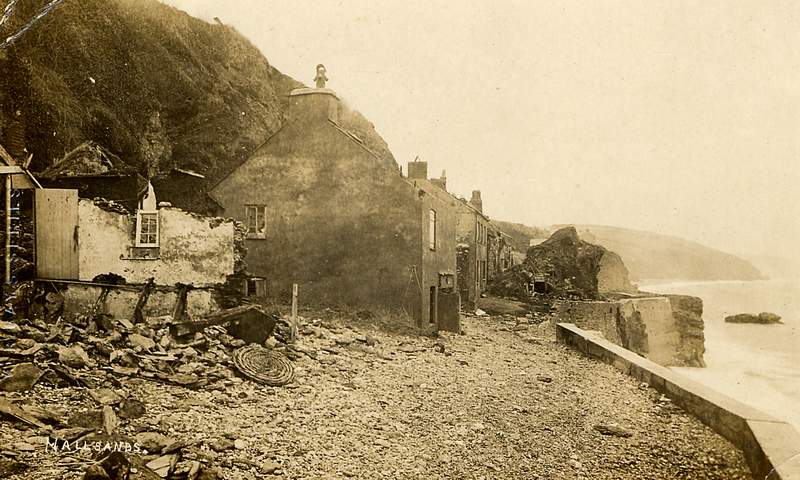The story of an entire village lost to the sea
by Sebastian Pitman
On this day, 101 years ago, a large storm irreversibly destroyed a South Devon village. The Hallsands disaster is a poignant reminder of the power that nature can bring to bare, especially in storm conditions. In one night, 29 homes were destroyed and an as the sea swallowed large parts of Hallsands, the entire village was abandoned.

Hallsands after the storm (http://www.abandonedcommunities.co.uk/)
There are contrasting arguments over the cause of the Hallsands disaster. In terms of coastal flooding and storm surge, it was undeniably a large surge event that raised water levels, coupled with a spring high tide and some large waves that physically did the damage on the night, but there are also confounding factors in the preceding 20 years.
The popular view centres around the construction of Devonport Dockyard, some 25 miles away in Plymouth. In order to construct the docks, large amounts of shingle were dredged from the submerged bank offshore of Hallsands, from 1897 onwards. By 1902, villagers were already reporting structural concerns, with increased erosion of the beach and foundations of houses. Conditions worsened over the years, with relentless dredging, and eventually the village succumbed to the large storm in Jan 1917.
There is an emerging, and quite different view, being proposed by researchers at Plymouth University, centred around the winter North Atlantic Oscillation (NAO) – this is a term for the fluctuating location of high and low pressure areas over the North Atlantic on seasonal cycles. This NAO has been linked to bi-directional wave climate in the bay where Hallsands was located, and shifting wave regimes on decadal scales (Wiggins et al., 2017).
